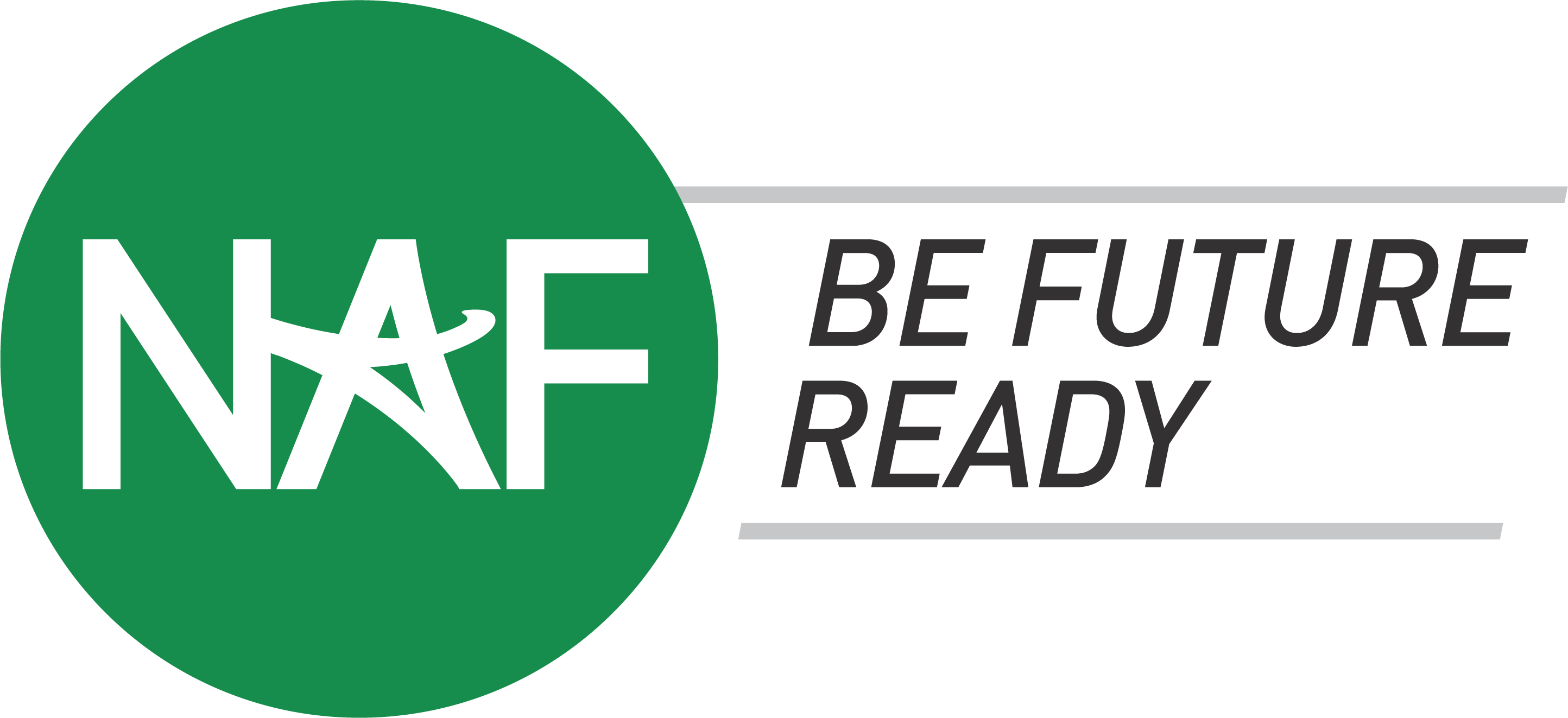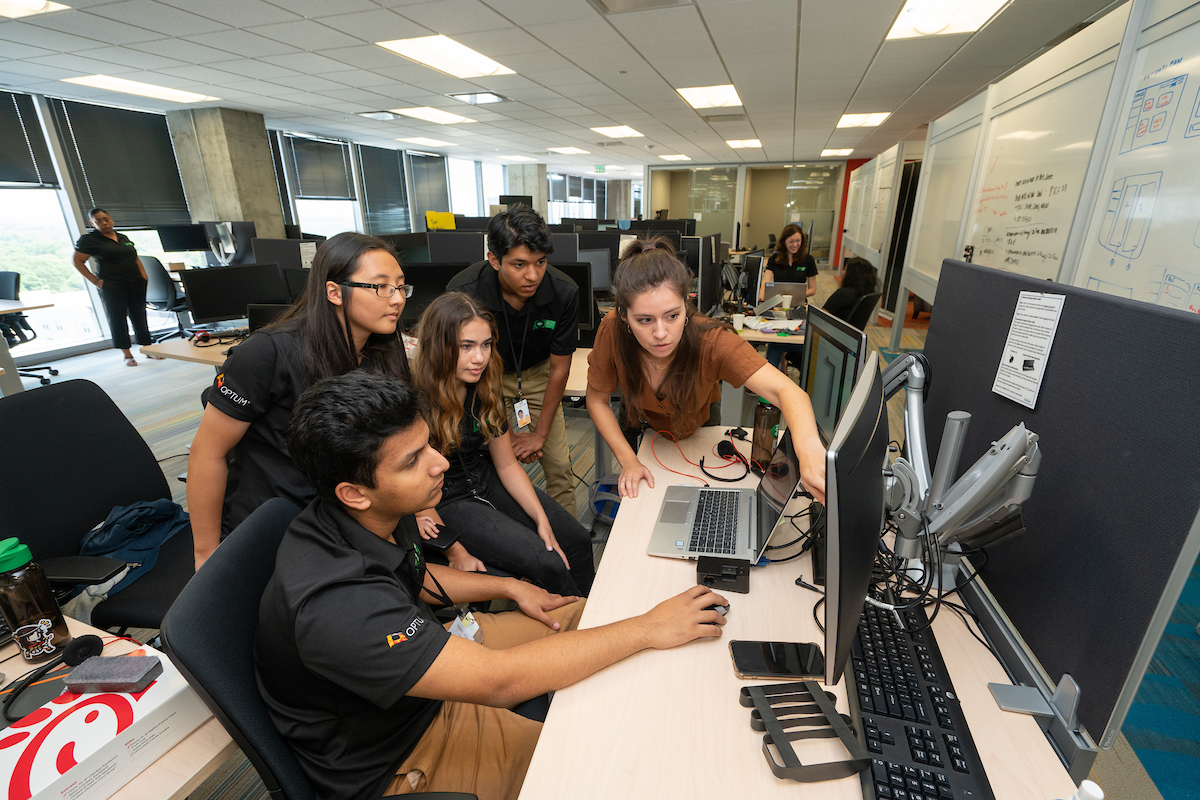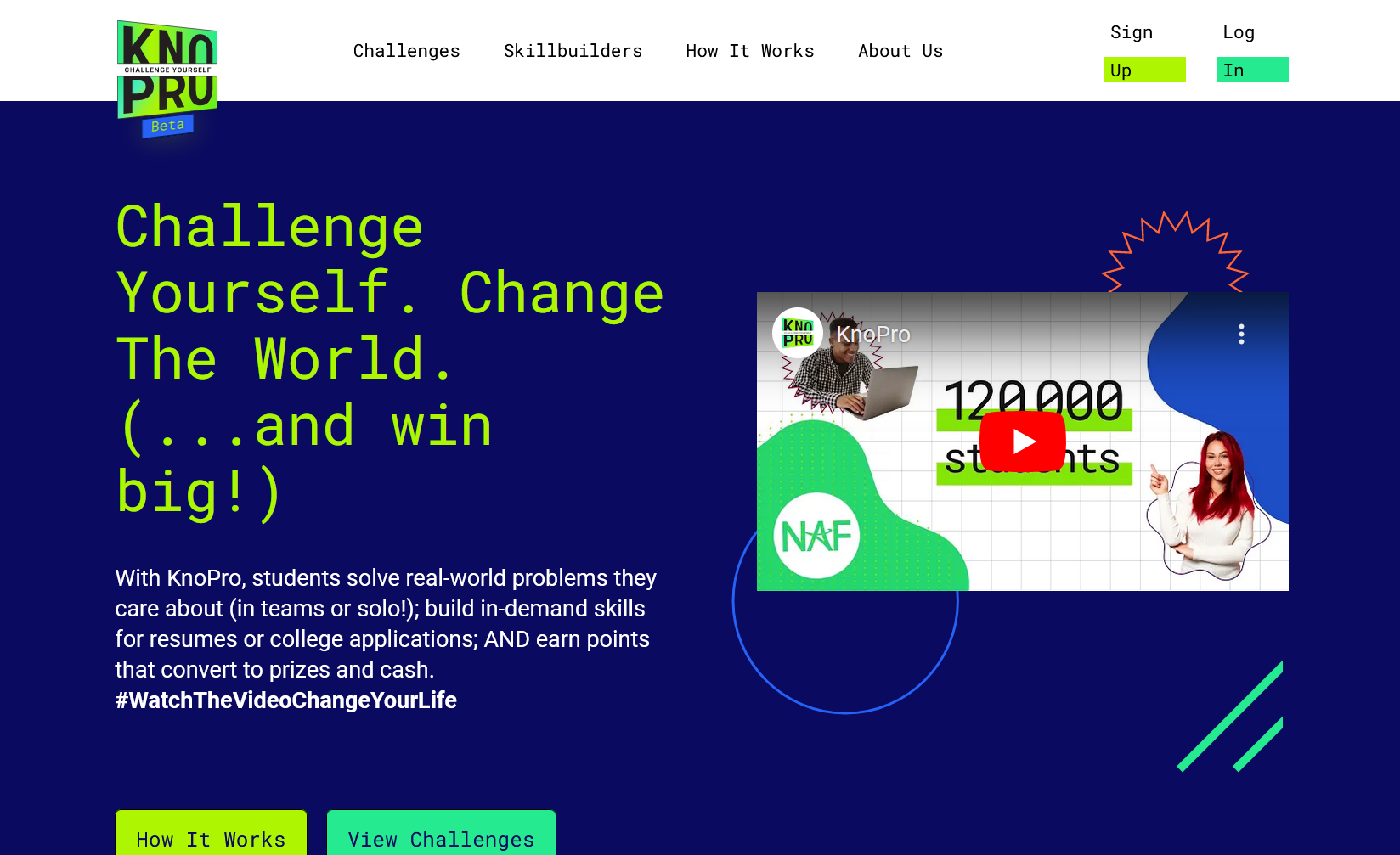Youth voice and sensemaking ~ the critical middle step to improvement
When reviewing the NAF Annual Student Survey results with educators earlier this year, many expressed surprise when learning that 40% of the seniors who responded said that they did not have two adults that they could contact readily for help, with their college and career goals and questions.
Educators responded: “Of course, they have adults they can go to! They have us! They [students] meet many professionals in careers related to their own interests. They have guest speakers in their classes each month. Perhaps these students just didn’t understand the question.”
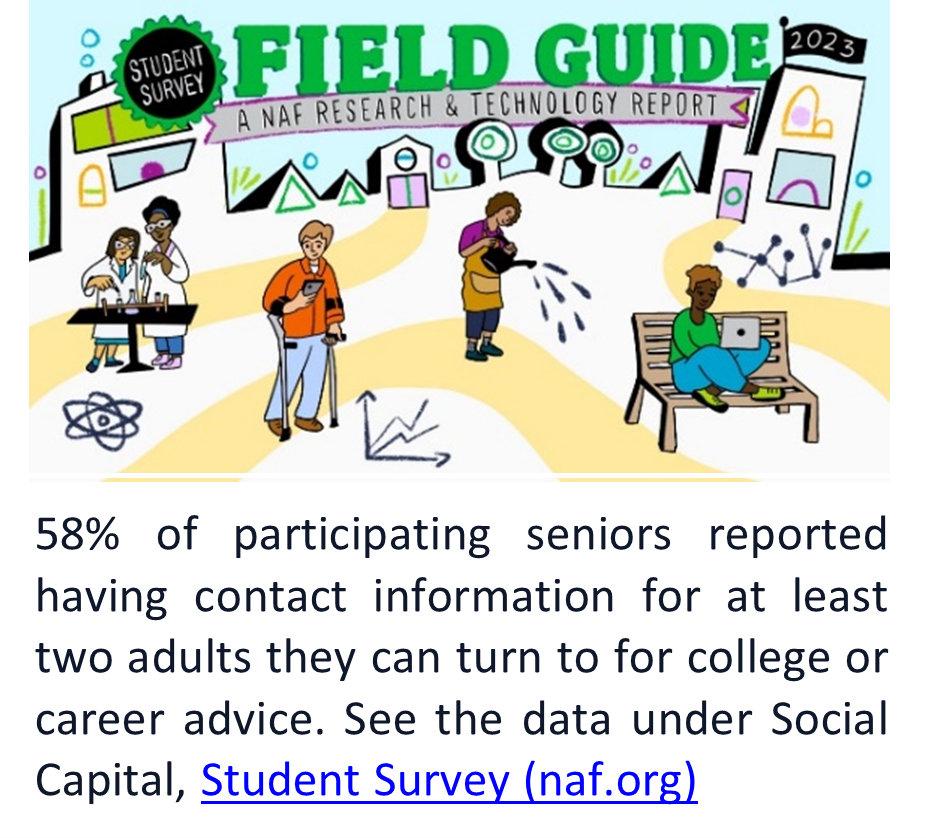
Each (if not all) of those conjectures could be true and explain the results being discussed. But do we stop here? Do we end at acknowledging that these results represent a complex issue with a variety of potential root causes? Because we represent a network of learners – of mission-driven programming set to improve readiness and increase options for all students after high school, we must dig deeper. But how? How do we go from the data – reflecting the potential realities of students we support – to better understanding the data and the needs of the next generation of leaders in our academies, schools, programs, and communities?
For those of us committed to student and organizational growth and improvement, consider this approach:
- Invite students into a shared process of analysis and sensemaking around this data.
- Engage students to identify actions and conditions that could improve their experiences.
- Incorporate the feedback into the planning and/or design process.
Sensemaking is the process of reflecting on data, recalling connected experiences, and organizing the experiences in a way that guides our next steps. Cameron Norman, with Censemaking, the Innovation Café, writes that sensemaking occupies a critical middle space in design. In school communities, it is the often-dismissed step that stands between a perceived problem and its solution — between the states of good and better. I am making the case for prioritizing the work in the middle for impactful and lasting improvement.
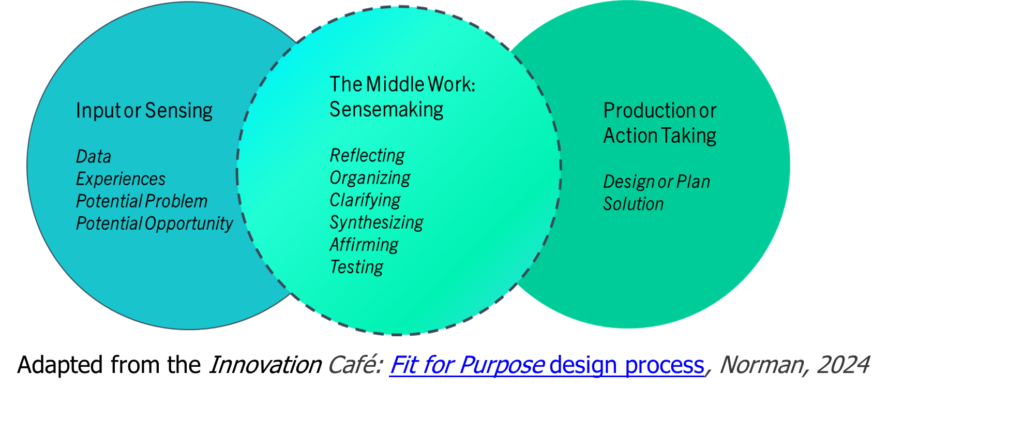
Investing in the Middle: The benefits of investing in this middle work are laid out below for both schools/communities and students:
- When data suggest opportunity for improvement, sensemaking around this data with students (those most impacted) helps to identify the problem or issue, uncover the context and conditions surrounding the issue, and explore what the implications are for everyone involved.
- Inviting students to help adults make “sense” of the data is equivalent to contracting a group of experts. Their engagement reinforces for young people that their voices (their lived experiences) have value. It is experiential – allowing them to practice being co-owners of their educational experiences and outcomes. The experience of becoming engaged as valued contributors to improvement offers young people a set of strategies (aka tools, skills) they can use to create positive change in future classrooms or communities. (Harvard School of Education, 2016).
Reforms initiated with student input are likely to improve the learning environment for all students, not just those involved in the reforms. The evidence is clear, according to Brion-Meisels, Harvard University “when schools give young people agency and voice, and integrate their perspectives into decision-making processes, those organizations are more effective in the work they’re trying to do.” (Giving Students a Voice | Harvard Graduate School of Education)
Beyond the Middle: Relationship-building and trust are important for students to feel safe, grow their confidence, and authentically engage with adults. We’ve witnessed from the NAF Youth PAR Pilot participants how essential it is for them to be involved in or made aware of the reports, learnings, and/or actions that resulted from the information they provided. Before engaging in sensemaking activities with students, it is vital to communicate the plan for how they will be involved and/or made aware of what happens next (beyond the “middle” work).
As we celebrate CTE month in February and enter the planning cycle for the next school year, educators and partners are encouraged to acknowledge students’ expertise and the value of the data available. Set aside one or two sessions to engage students in reflection and evaluation of their experiences around the issues of importance. Start with the data you have and give time and attention to the critical middle of planning for improvement and innovation – sensemaking with and learning from those most impacted – students.
Check out this resource, Exploring Data with Youth for Improvement – A Recipe Card to guide you and your students in review of the latest results from NAF Annual Student Survey Data or other datasets.
This resource is a part of the NAF Youth Voice and Engagement (Youth Participatory Action Research – YPAR) toolkit. It offers educators and allies a variety of tools and activities they can use to engage students and other youth in collaborative examination of data, interpretation of information, planning and decision-making, and action-taking. https://ash.naf.org/public/par-toolkit.
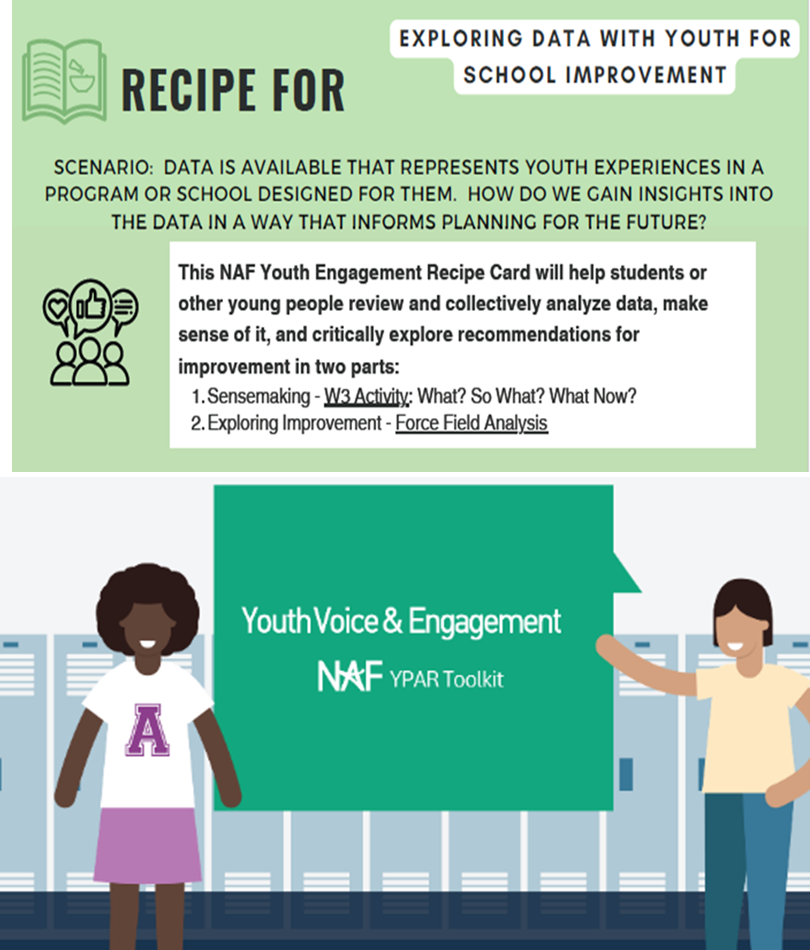
Contact NAF for more information on our Youth Voice and Engagement efforts and resources.
